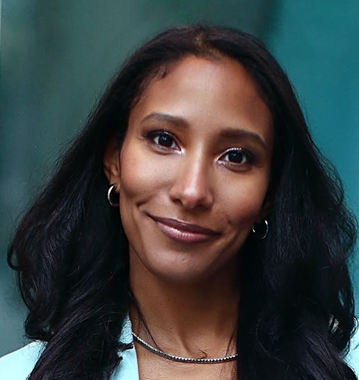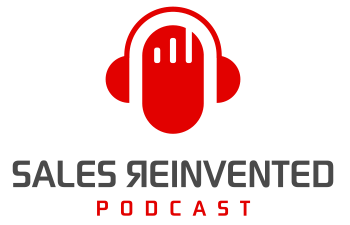Episode #400: Zoya Segelbacher

Meet
Zoya Segelbacher,
Zoya Segelbacher did Sales Enablement at the world’s leading AI company for Revenue Intelligence, Gong (most recently $7.5 Billion Dollar evaluation). There she ran Gong’s Sales MBA, an AE-readiness program that resulted in more than half of Gong’s SDRs getting promoted to AE within a year. With a passion for technology and sales excellence, she has won awards and recognition from the Signals 2023 AI Revenue Summit, Demandbase, Women in Sales, Aligned, UserGems, and QuotaPath.
Now she runs Uncapped, a sales platform designed to bring more diversity into tech sales and improve rep retention by training sellers to succeed in B2B tech sales and by creating networking opportunities.
Our Mission Is To Change The Negative Perception Of Sales People
Our Vision Is A World Where Selling Is A Profession To Be Proud Of
The “Science” of cold-calling encompasses the things that almost anyone could implement in a few minutes of training or by using a script. You use an opener, deliver a pitch, talk next steps, and close—all while keeping it short and sweet.
Zoya believes that there are best practices that fall between the art and the science. They’re concrete things that you can implement, such as keeping the conversation focused on your prospect—not the product.
The “Art” of cold-calling encompasses the things that are difficult to teach, such as tone, tact, confidence, and sales and business acumen. Those things dictate a salesperson’s ability to get a prospect to open up.
The only way to improve and get better is to practice—which can be accelerated with a good coach. In this episode of Sales Reinvented, Zoya steps up into the coaching position to share how to master the art and science of cold-calling.
Outline of This Episode
- [1:22] Is cold-calling still relevant?
- [3:11] The art and science of cold-calling
- [6:06] How Zoy prepares for cold-calling
- [8:38] Zoya’s simple yet effective opening line
- [11:23] Why Zoya is a fan of scripted guidelines
- [14:44] Indispensable tools for modern cold-calling
- [18:00] Zoya’s top cold-calling dos and don’ts
- [24:47] How Zoya handles objections on a cold call
Zoya’s effective opening lines
Zoya will rank accounts in order of who matches with past clients or other people they’ve closed business with. She’ll look for the right kinds of buying signals and research their tech stack. Once she identifies the accounts, she identifies the people who have the power to make decisions.
When she makes a call, Zoya finds success with a simple opening line: “Hi, insert name, this is Zoya Segelbacher, how are you doing today?” Why does this work for her? Because it makes her feel confident.
A company called Hyperbound creates AI prospects (bots) that you can call and practice cold calls on. When practicing, one of the bots was mean and quickly hung up on her. So she recently changed her opening line to “Hi, this is Zoya Segelbacher, please don’t hang up.” Whatever you do, you have to be adaptable.
Why Zoya is a fan of scripted guidelines
Zoya points out that, generally speaking, the longer the conversation goes, the better the conversation is going. Between 5–10 minutes is a good amount of time to be on a cold call.
Zoya would worry if it goes beyond 30 minutes which could mean that you’re getting lost in objections, or spending time talking about features/benefits and things that aren’t relevant to the current conversation. The goal is to get their attention and focus on the next step—a second deeper conversation.
Zoya is a fan of scripted guidelines. You need to have different openers to work with, know the value proposition, and have options for the close. But you need to leave it flexible enough to keep your voice genuine. The goal is to engage in a real conversation.
Zoya’s top cold-calling dos and don’ts
Zoya dropped some powerful dos and don’ts:
- Respect yourself and what you bring to the table. Don’t lower yourself in stature thinking it will appeal to and appease your prospect.
- Approach every obstacle with curiosity and an open mind. You will get rejected a lot—figure out what you can learn from those rejections.
- Actively listen to your prospect. Make sure you aren’t so married to a script that you’re not listening to what your prospect has to say. Let go of your agenda and understand yours.
- Don’t make a call if you don’t feel confident in your reason for calling. You need to have conviction that the business you’re about to call needs what you’re offering. If you don’t have that conviction, you need to find it.
- While you do have to step outside of your comfort zone, don’t do something that just doesn’t feel like you. Humor can be powerful and compelling but it doesn’t work for everyone. You can take inspiration from others but make sure to AB test it and decide what works for you.
- Don’t tap dance on a cold call. Don’t focus on a small detail that no one cares about (benefits, features, etc.) because you think it’s helping your case. It might sound like “We offer a lifetime warranty!” Your prospect will lose interest because it doesn’t have anything to do with their problem.
How Zoya handles objections on a cold call
Zoya handles objections by classifying what type of objection it is.
- Some objections come from a place of “I hate that you interrupted my day and whatever you say, I’m going to be a jerk.” Your best bet is to generate curiosity. You might mention social proof or the problems they typically have.
- Some objections are “I don’t see value in your pitch” which means the prospect doesn’t understand the problem you solve. That means you made a mistake with communication. To turn this around, you’ll want to ask clarifying questions to understand where you went wrong. Ask them for feedback on the call, ask more questions, and try again.
- The last type of objection is when they do understand your value proposition but they think they don’t have the problem, it’s not a priority, or that it’s too expensive to fix. You need to figure out if there is a pain you can solve but they just don’t know it yet. This requires active listening. They may truly have more pressing issues.
Zoya shares so many useful strategies and tools in this episode. Don’t miss it!
Resources & People Mentioned
- 6Sense
- Orum Power Dialer
- Practice cold calls with Hyperbound
Connect with Zoya Segelbacher
Connect With Paul Watts
Audio Production and Show notes by
PODCAST FAST TRACK
https://www.podcastfasttrack.com
Learn More About Zoya Segelbacher
What was a pivotal moment or experience in your career that shaped your approach to cold calling, and how did it change your perspective or strategy?
A pivotal moment for me was realizing the amount of powerful people you could get in a room together from cold calling alone. When I was an SDR, my AE gave me a list of 3 very senior role titles at a target account. It was a well-known company. He said that if I could get those three people to agree to meet at their HQ, he would fly me out to join and let me turn it into “work-cation” (travel for work but have plenty of time to enjoy the city). Within a month I had the meeting booked and all three people confirmed their attendance. A large deal was now on the table because of the leg work I did cold calling. While it wasn’t easy, the ball actually got rolling very quickly once I started having conversations with the right people. I realized that cold calling was more than a task I got paid to do, it was a bridge to power and opportunities that I could create using nothing but my brain and some contact info.
Can you share a specific tactic or approach you’ve used in cold calling that significantly increased your success rate? Please provide a brief example or case study.
When I was at Gong, the Sales Ops and I dug into some data and realized 3 trends:
- That abstract and aspirational messaging wasn’t working
- Priorities-driven discovery was winning
- Taking the lead by making suggestions regarding next steps and timeline was outweighing soft closes like “How do you think we should proceed?”
With that information we created a short and sweet value prop focused on concrete problems we solved, we made a discovery framework so that reps could have real business conversations in cold calls, and we coached reps to saying things like “Can I make a suggestion?” instead of “How should we proceed.” and we saw a 14% increase in opportunities generated by SDRs.
Cold calling often comes with its set of challenges and rejections. Can you share a particularly tough challenge you faced while cold calling and how you overcame it?
I was cold calling about an omni-channel customer experience software and my prospect was from a well-known brand that was performing very strongly at the time so they felt they didn’t need to invest in what I was calling about. The problem was that although their business was very much set up to excel in a world where shoppers preferred brick and mortar, they were horrendously unprepared for the digital transformation that was coming. But because they had such strong brick-and-mortar loyalty, they didn’t want to talk.
I dealt with this by staying professionally persistent. I reflected on my messaging and realized I had been discounting their success when I was initially delivering my value proposition. My lack of recognizing their success made it sound like I didn’t know their business.
I eventually earned a meeting by showing that I understood their current loyalty strategy and asked for an opportunity to show how our software supported and strengthened their strategy.
What are the top three tools or resources (e.g., software, books, training programs) you consider essential for someone looking to improve their cold calling skills and outcomes?
When it comes to books I’ve broken it down into fundamentals, sales psychology, and mindset:
- For fundamentals: Fanatical Prospecting by Jeb Blount
- For sales psychology: Influence by Robert Cialdinin
- For mindset: Shut the Hell Up and Sell by Ronnell Richhards
Lastly, when it comes to training programs, check out Uncapped. That’s the sales enablement platform I created for people in tech sales interested in investing in their skills and expanding their network. Not only that, we’re very proud to be partnered with Hyperbound and anyone in the community has full access to Hyperbound, which is a “virtual sales gym” to uplevel your sales skills on the phone.
How do you foresee the practice of cold calling evolving in the next few years with advancements in technology and changes in buyer behavior? What advice would you give to sales professionals to stay ahead of the curve?
I believe people who embrace a multi-channel approach will be most successful. Cold calling isn’t going away by any means but new channels are proving to be important. Cold callers who embrace social selling and relevant content creation will stand out and have an advantage.
The same goes for cold callers who embrace technology. Whether they use technology to develop their skills, assist in script creation, or to save them time, those who stay on top of technology (whether it’s the company provided tech stack or outside of it) will get better results than those who are stuck doing things manually and limited by old systems that don’t help them scale their work.
Share This Episode, Choose Your Platform!
